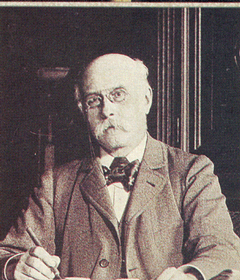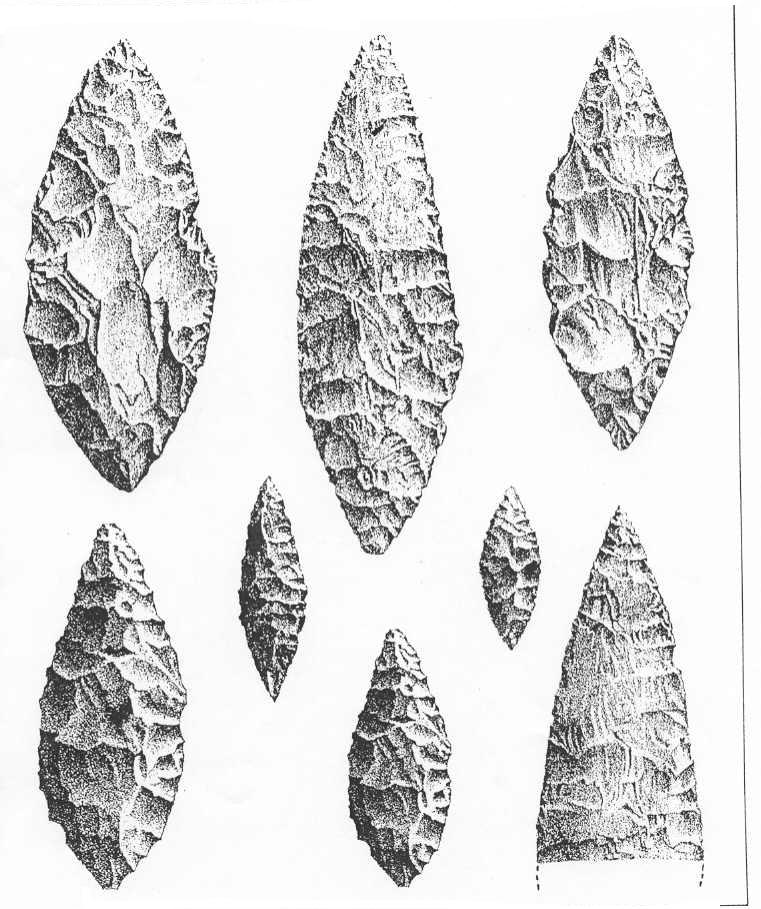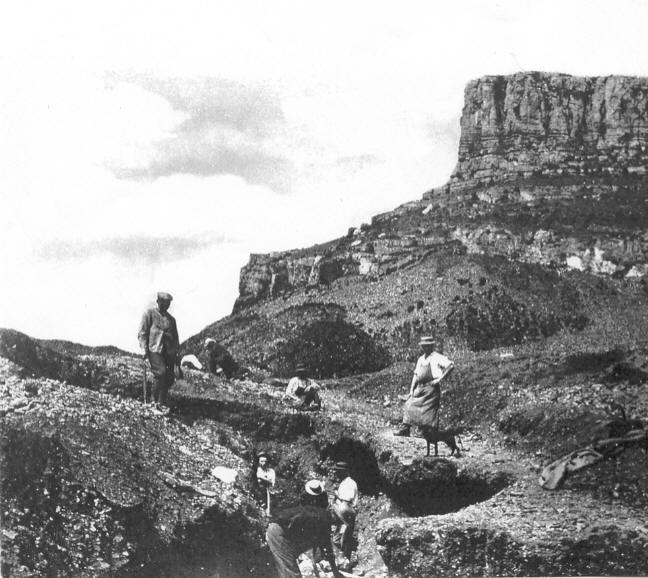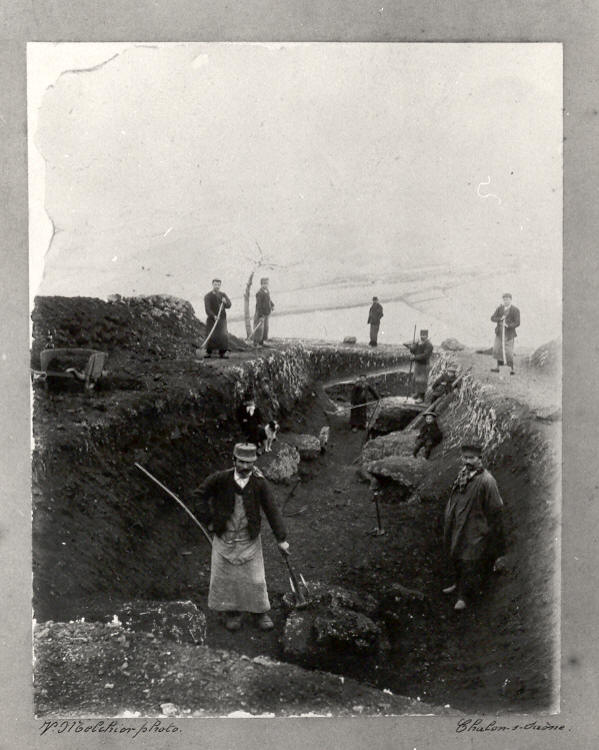1860-1920
Local people had long been aware of the mass of horse bones above the village, some of it had been was exploited and used as fertilizer before the Cros du Charnier was identified as a Paleolitic site. H. de Ferry, a geologist from Mâcon, found Paleolithic stone tools mixed with the bones in 1866, not long after the scientific community of the time had recognized Boucher de Perthes's claim of humankind's antiquity
He began excavating there with a friend of his, A. Arcelin. They were soon to appreciate the importance of a site so rich in faunal remains and artifacts. Arcelin continued to direct excavations which, for the time, were controlled and well documented.
From the time of its discovery to the present, research at Solutré has paralleled the development of the field of Paleolithic Prehistory. G. de Mortillet chose Solutré as the type site of a Paleolithic culture characterized by large bifacially retouched blades, the Solutrean.
The Abbé Henri Breuil excavated a trench in 1907 and used the results of his study of the site stratigraphy to redefine the sequence of Upper Paleolithic cultural traditions.
Breuil clarified the sequence of archaeological layers represented at Solutré. He attributed the horse magma to a cultural phase now called the Gravettian and demonstrated that it preceded the layers containing laurel leaf points He also noted that the Solutreans were reindeer hunters. The Solutrean, in turn, was under the more recent Magdalenian layer which contained an abundance of horse bones.
Excavations largely done by amateurs to procure collections of "laurel leaf" points continued until 1926 and contributed to the destruction of large sectors of the site.





